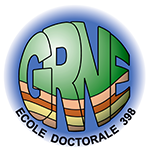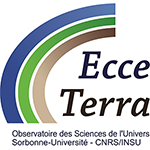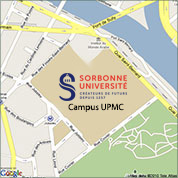Séminaire ISTeP - Alison Till
(USGS, Anchorage)
The Arctic Alaska–Chukotka microplate:paleogeographic origin and Mesozoic orogenic history
The tectonic evolution of the Arctic realm, particularly in the Mesozoic, remains a subject of considerable uncertainty. The origin of crustal entities in the Arctic and the nature, location, and age of major tectonic boundaries are incompletely studied and understood. The largest piece of continental crust of uncertain origin that plays a role in Arctic tectonics is the Arctic Alaska-Chukotka terrane or microplate (AAC). The AAC includes northern Alaska, northeasternmost Russia, and the adjacent continental shelves. Because of its size and importance to Arctic resources, the origin of this microplate and its movements during the Paleozoic and Mesozoic are critical components of tectonic and paleogeographic models. This talk addresses two aspects of the history of the AAC: (1) its origin and pre-Devonian paleogeographic history; and (2) the nature of crustal thickening and basin response during Mesozoic collision as the AAC moved out of the Arctic realm into the Pacific realm.
Combined geologic, faunal and geochronologic studies indicate that pre-Ordovician rocks in the AAC were likely part the Timanide orogen of northeast Baltica, and that the AAC rifted from that orogen in the Early Ordovician. Evidence includes detrital and igneous zircon ages, affinities of mega- and microfauna, and geochemical studies of rift-related mafic rocks. The AAC contains mixed Siberian, Laurentian, and Baltic fauna of Ordovician and Silurian age; during a period of drift it maintained “faunal communication” with all three continents.
Detrital zircon data from Canada and Alaska indicate that the AAC was likely present off of northern Laurentia by the Devonian.
The Pacific-facing margin of the AAC was involved in a complex collision zone during the Cretaceous. In Alaska, this zone involved arc-continent collision; in Chukotka (easternmost Russia), the nature of the collision is unclear. However, evidence recorded in metamorphic rocks indicates that crustal thickening occurred in both Chukotka and Alaska during the Early Cretaceous and occurred in three pulses. Basin response to thickening involved an unusually large sediment flux; clinoform geometry shows that Chukotka was a major sediment source. The crustal architecture of Chukotka remains a critical unknown in unraveling Mesozoic Arctic tectonics.
29/01/2014 à 12h30, Salle de conférences de l'UFR
Egalement dans la rubrique
Chiffres clés (Mars 2025)
L'ISTeP comprend 131 membres dont :
Permanents (66)
- Professeurs : 17 (+2 PAST)
- Maîtres de conférence : 26
- Directeurs de recherche CNRS : 1
- Chargés de recherche CNRS : 1
- ITA : 19
Personnels non permanents (65)
- Collaborateurs bénévoles / émérites : 17
- Chaire de professeur junior : 1
- Enseignants-chercheurs contractuel : 2
- 1 MCF accueil en délégation
- ATER et Post-Docs : 9
- Doctorants : 32
- ITA-BIATSS : 3





